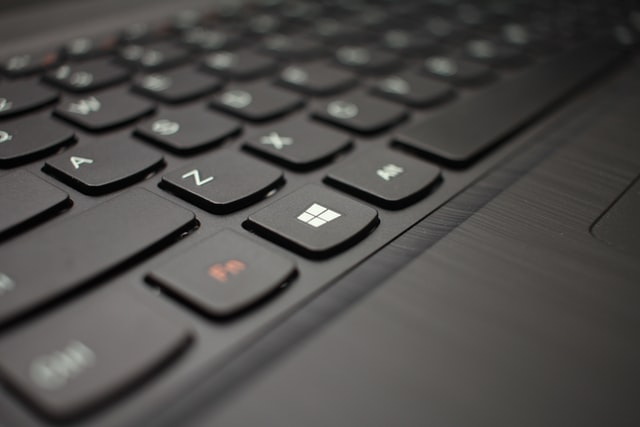By Andy Coulson
This issue of The Edit has a theme of working efficiently, so let’s take a look at how we can persuade every editor’s favourite tech tool to work efficiently.
 1. Keyboard shortcuts
1. Keyboard shortcuts
Keyboard shortcuts are a great little time saver. Think about what you do when you use a mouse – you move it about to try to line up a pointer on a (small) target. You then click and, depending on what you want to do, perhaps repeat this two or more times to get to your command. But with a shortcut you press two or three keys together, and away you go. ‘How-To Geek’ has a really good list.
You don’t have to accept Microsoft’s default choices, either. If you go to Options > Customize Ribbon you’ll see an option at the bottom to customise keyboard shortcuts. This allows you to set up shortcuts for any commands. You can also allocate shortcuts to macros (see below).
2. Styles
Styles offer you a way to quickly format elements of the document. However, they can be a bit fiddly to use. In Word 365, the styles appear in the Home ribbon, as well as in the Quick Access Toolbar at the top. Often you’ll find you use the styles already in the document, and you simply apply them by putting your cursor in the block of text you want to style and then clicking the style name.
But, what do you do when a client says ‘make file A look like file B’? Word has a mechanism to copy styles between documents, but it’s well hidden. You can add the Developer tab to the ribbon, which you do by going into File > Options > Customize Ribbon and selecting ‘Developer’ from the list on the left. Make sure ‘Main Tabs’ is selected at the top of the list on the right and then click ‘Add’.
In the Developer tab, click on ‘Document Templates’, and then ‘Organizer’ in the ‘Templates’ tab of the pop-up box. You will see two lists. The one on the left should have the file name of your current document underneath. On the right-hand one, click ‘Close File’, and this will clear the list, then change to ‘Open File’. Click on it and select the template or document you want to import from. You can then simply select the styles you want and click the ‘Copy’ button to import these to your document.
3. Wildcards
If you use Find and Replace, learning to use wildcards will transform your searching. These allow you to look for patterns rather than specific words. For example, ‘?ed’ tells Word to find ‘ed’ preceded by any other single character, so it would find ‘red’, ‘bed’, ‘Red’ or ‘Bed’ and so on. This can get complicated, but it can also be a real time saver. One of my favourite applications is cleaning up question numbering in textbooks where I can’t use auto-numbering. Here, searching for ‘([0-9]{1,2})\)^s’ and replacing with ‘\1^t’ would change one- or two-digit numbering like this: ‘1.<space>’ to ‘1<tab>’.
There are an awful lot of options, and one place to find help on these is Jack Lyon’s Wildcard Cookbook for Microsoft Word, which is available as a PDF ebook. I have it open in my ebook reader most of the time I’m editing in Word. Geoff Hart’s Effective Onscreen Editing also has a chapter on making the most of Find and Replace.
4. Macros
Macros are short programs that build on the capabilities of Word. They often link together a number of functions within Word to achieve a more complex task, be that something which finds information about the document, changes what you have selected or makes global changes.
Many of you will be aware of Paul Beverley and his macros, and I can’t suggest a better way in to macros than Paul’s Macros by the tourist route. This is a really good introduction to using macros, and will lead you to Paul’s amazing macro library. Once you get into using these you can really start saving time on your work in Word.
 Among my favourites are DocAlyse, which runs a range of tests on a document to flag the types of issues it may have; WhatChar, which identifies any character; SpellingErrorLister, which creates a list of potential spelling errors; and HyphenAlyse, which identifies the frequency of hyphenated words (and their non-hyphenated equivalents) and checks common prefixes.
Among my favourites are DocAlyse, which runs a range of tests on a document to flag the types of issues it may have; WhatChar, which identifies any character; SpellingErrorLister, which creates a list of potential spelling errors; and HyphenAlyse, which identifies the frequency of hyphenated words (and their non-hyphenated equivalents) and checks common prefixes.
The CIEP has also produced a fact sheet about getting started with macros.
5. Add-ins
Add-ins go a step further than macros. They are programs that work within Word to add more functions. Many of you will have heard of PerfectIt, and this is a good example. PerfectIt will check consistency in the document in a way that Word’s tools simply can’t. You can install stylesheets to suit particular clients (or create your own). I recently had a job using Chicago style (CMOS), and through the forums (thanks, Hilary Cadman!) found a ready-built one that was a big help.
PerfectIt is not the only add-in you can use. I’ve talked about ClipX before, which is an add-in to Windows rather than Word. It’s a clipboard expander that allows you to see the last 25 entries in your clipboard, so you can reuse them. I’ve just discovered it too has add-ins and one, Stickies, maintains a constant list of entries. I use this a lot when I’m manually tagging a file, so I can quickly insert tags.
6. Learn Word
I’ve saved this for last, but perhaps it should be first. Invest some time in learning to use Word to its full potential, as it will repay you time and again. Many of the things above are rooted in a knowledge of how best to use Word. As you get more familiar with Word you’ll be able to customise your set-up, helping you to use it more efficiently. A great resource to help with this is the CIEP course Editing with Word. This will give you a good introduction to many of the things I’ve talked about above.
 Andy Coulson is a reformed engineer and primary teacher, and a Professional Member of CIEP. He is a copyeditor and proofreader specialising In STEM subjects and odd formats like LaTeX.
Andy Coulson is a reformed engineer and primary teacher, and a Professional Member of CIEP. He is a copyeditor and proofreader specialising In STEM subjects and odd formats like LaTeX.
‘What’s e-new?’ was a regular column in the SfEP’s magazine for members, Editing Matters. The column has moved onto the blog until its new home on the CIEP website is ready.
Members can browse the Editing Matters back catalogue through the Members’ Area.
Photo credits: keyboard – Halacious; tourist map – pixpoetry, both on Unsplash
Proofread by Emma Easy, Intermediate Member.
Posted by Abi Saffrey, CIEP blog coordinator.
The views expressed here do not necessarily reflect those of the CIEP.
